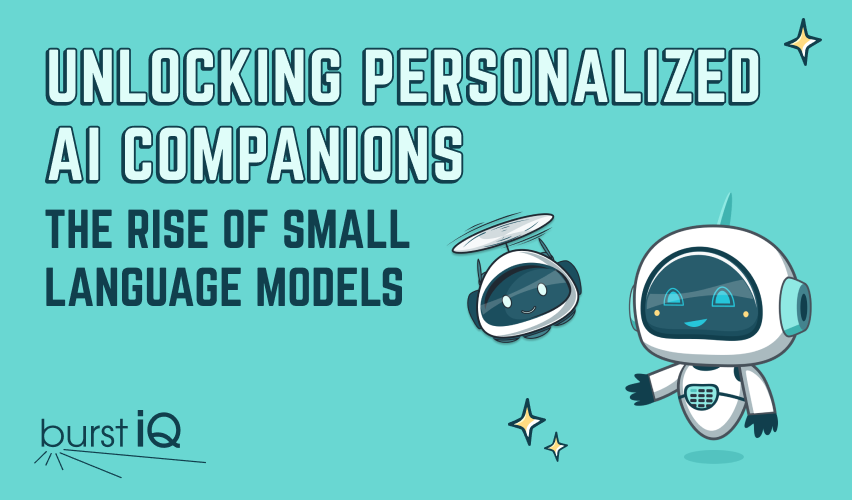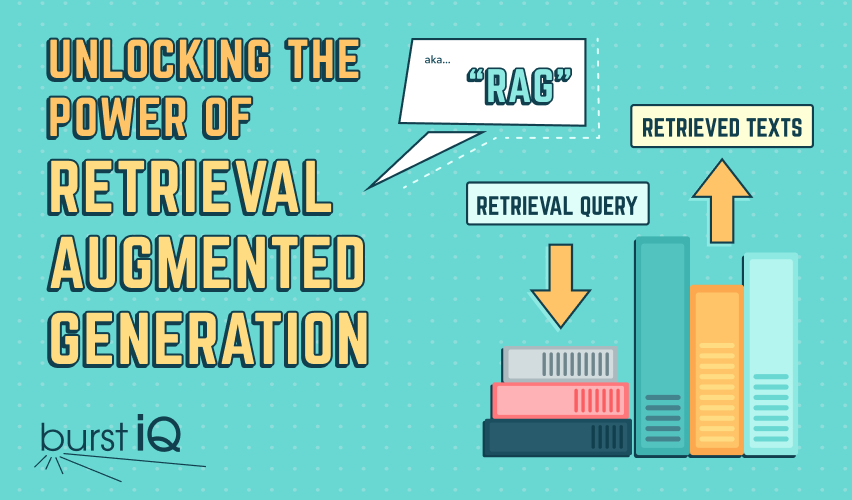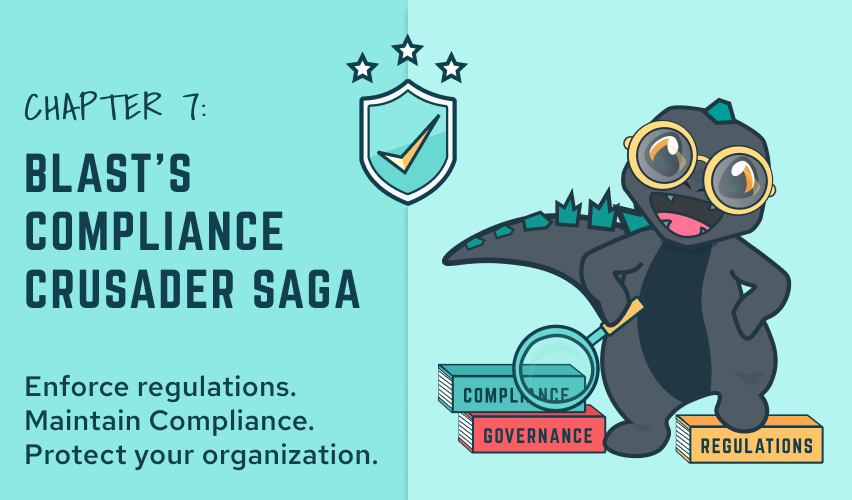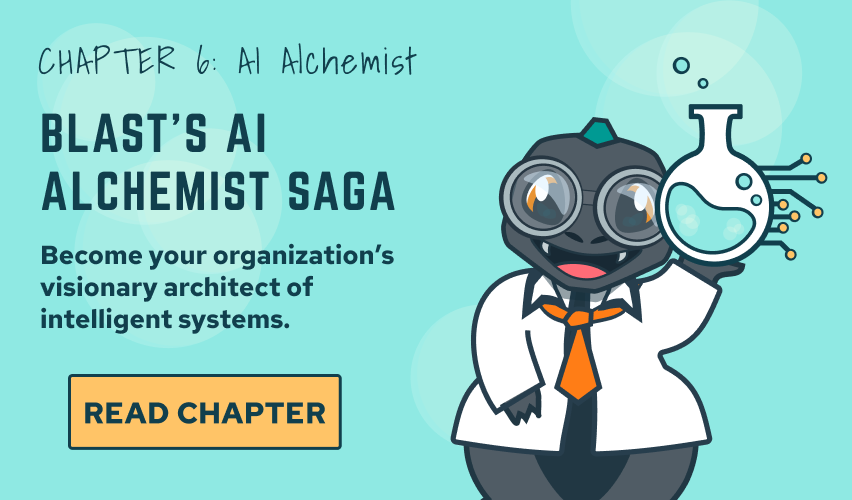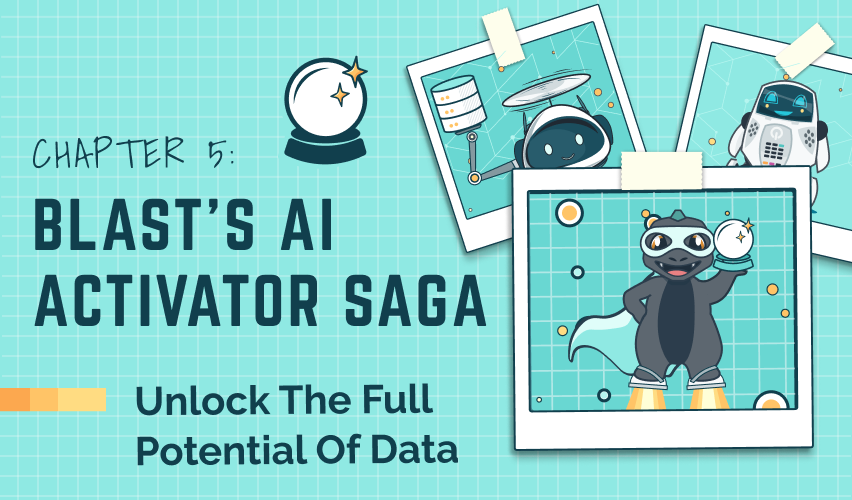Knowledge Burst Series:
Conquering Data Chaos
to Win in an AI World
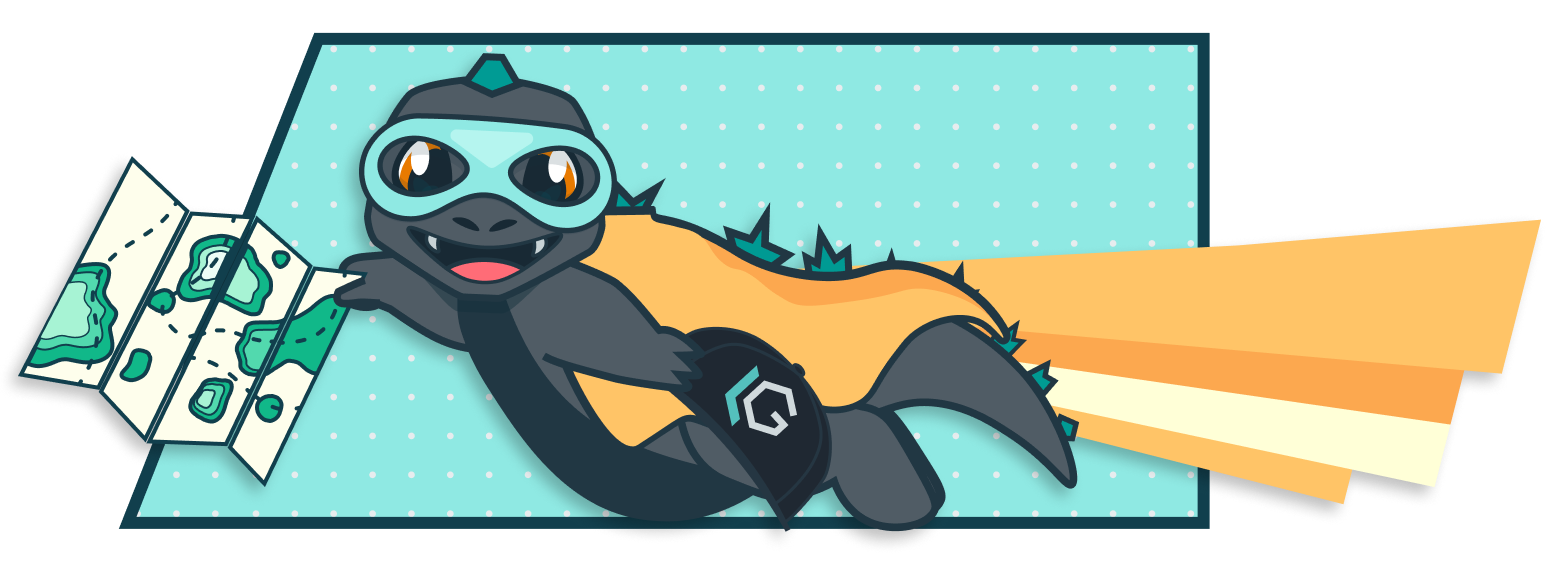
In a world increasingly driven by data, the landscape can often feel chaotic and overwhelming. The urgency to implement AI both successfully and ethically has never been greater. Join us in this Knowledge Graph Series as we embark on an exhilarating adventure with our hero, Blast. Equipped with his powerful tool, LifeGraph®—the next generation of data management—Blast tackles the chaotic landscape of data. Prepare to explore the intricacies of data-driven innovation and discover how to harness its true potential!
At BurstIQ, we make data your superpower.
We’ve found our customers identify with the following data personas:
Quality Commander:
The relentless champion of data integrity, tirelessly working to ensure that information is not just abundant but also accurate and actionable.
THE GREAT UNIFIER:
The collaborative force that bridges gaps between silos, systems, departments, and disciplines, fostering a culture of data-sharing and teamwork.
GUARDIAN OF PRIVACY:
The vigilant protector of personal information, committed to safeguarding privacy while navigating the complexities of data collection and usage.
DATA DEMOCRATIZER:
The passionate advocate for accessibility, striving to empower everyone in their business ecosystem with the knowledge and tools to leverage data for their benefit.
AI Activator:
The visionary architect of intelligent systems, harnessing the power of artificial intelligence, machine learning, and generative AI as a force multiplier to enhance team productivity, personalize engagements, and accelerate the pace of innovation.
AI ALCHEMIST:
A master of transforming raw data into golden opportunities, using AI to create innovative solutions for market differentiation and business growth.
COMPLIANCE CRUSADER:
The unwavering enforcer of regulations and ethical standards, ensuring that data practices align with laws and best practices to protect both organizations and consumers.
Throughout this Knowledge Graph Series, we will dive deep into each persona, celebrating their unique missions and the challenges they face in the ever-evolving data landscape. You’ll learn how LifeGraph helps you tackle some of the biggest obstacles in data management.
Chapter 2:
Great Unifier
blast’s Great Unifier saga
In today’s data-driven world, organizations face a critical challenge: the proliferation of data silos. These isolated pockets of information hinder collaboration, impede decision-making, and stifle innovation. Enter our hero, Blast, in his latest role as The Great Unifier! Armed with BurstIQ’s LifeGraph® platform, Blast is on a mission to break down barriers, foster collaboration, and unleash the full potential of unified data across the enterprise.
At BurstIQ, we believe that data unification is more than a technical challenge—it’s a transformative force that can revolutionize how organizations operate and innovate. In this Knowledge Burst Series, we’ll explore the key principles, challenges, and solutions for becoming The Great Unifier in your organization, and how LifeGraph can help you achieve this vital role.
A Land of Data Silos
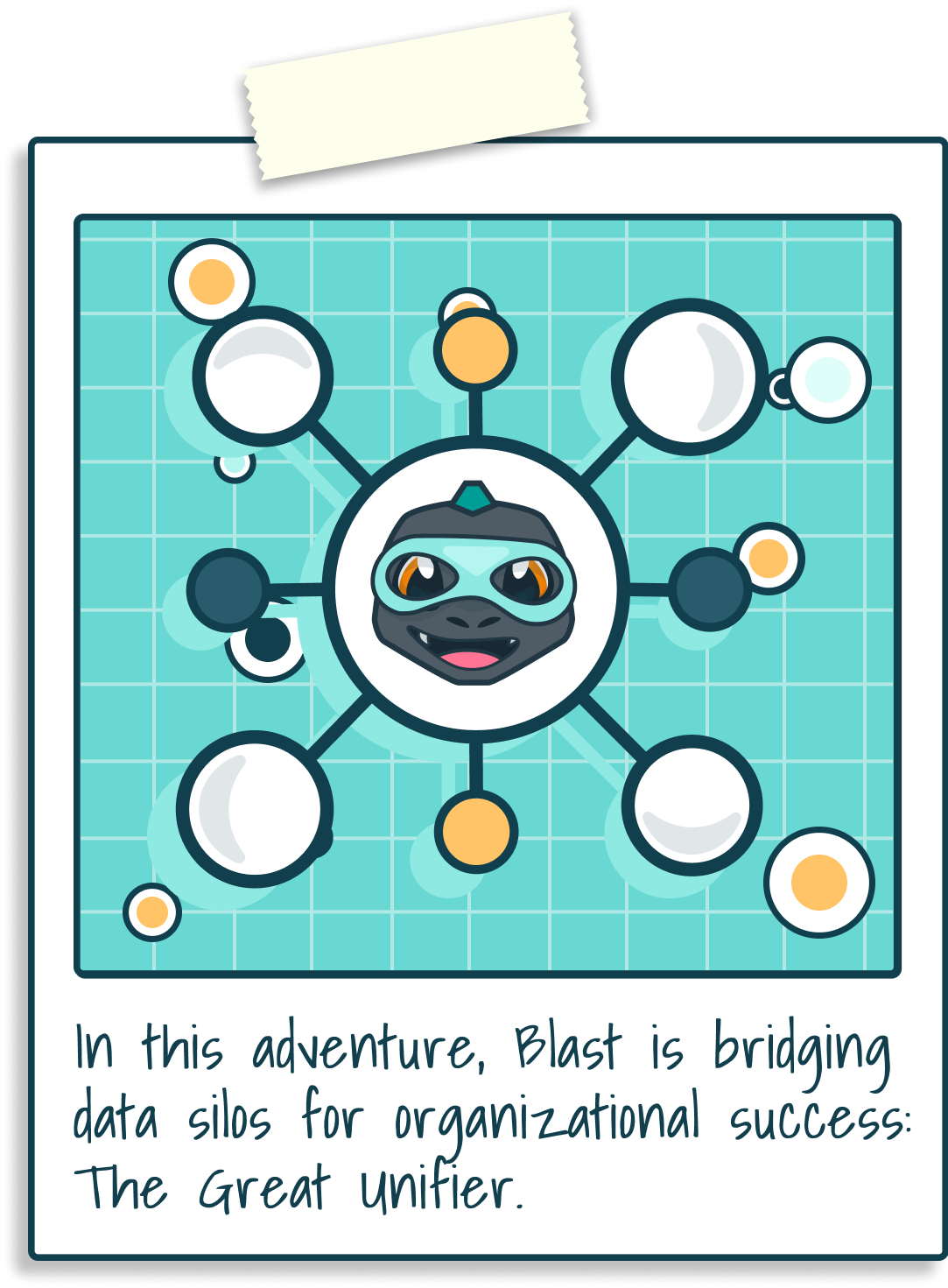
Data silos represent a significant obstacle to organizational efficiency and innovation. These isolated repositories of information create numerous challenges:

Inefficiencies & Reduced Productivity:
Knowledge workers spend an average of 12 hours a week “chasing data” due to silos, leading to wasted time and duplicated efforts. U.S. businesses lose an estimated $1.8 trillion annually due to lost productivity caused by data silos.

Inconsistent & Incomplete Data:
Fragmented systems result in conflicting information and incomplete datasets, hindering accurate decision-making.

Communication & Collaboration Barriers:
Isolated data creates a “stay out of my way” mentality among departments, impeding teamwork and innovation.

Increased Costs & Resource Utilization:
Maintaining multiple data silos is costly and leads to inefficient use of storage and human resources.

Security & Compliance Risks:
Scattered data across various systems makes it challenging to implement consistent security measures and ensure regulatory compliance.

Organizational Growth:
As companies expand, departments may develop their own systems and processes, leading to isolated data repositories.

Technological Barriers:
Incompatible software or data management systems between departments create technical silos.

Cultural Factors:
A company culture that doesn’t prioritize data sharing can lead to protective attitudes towards departmental data.

Lack of Centralized Data Management:
Without a unified strategy, departments may independently manage their data.

Departmental Silos:
Organizational structures emphasizing departmental independence naturally lead to data silos.

Diverse Business Unit Systems:
When different units use varied systems for data management, it results in non-communicating data repositories.

Smart Data Transformation:
LifeGraph enriches raw data with trust and context, making it more valuable and actionable across the organization.
Organizations don’t purposefully create data silos; it often happens organically over time.
how LifeGraph helps:
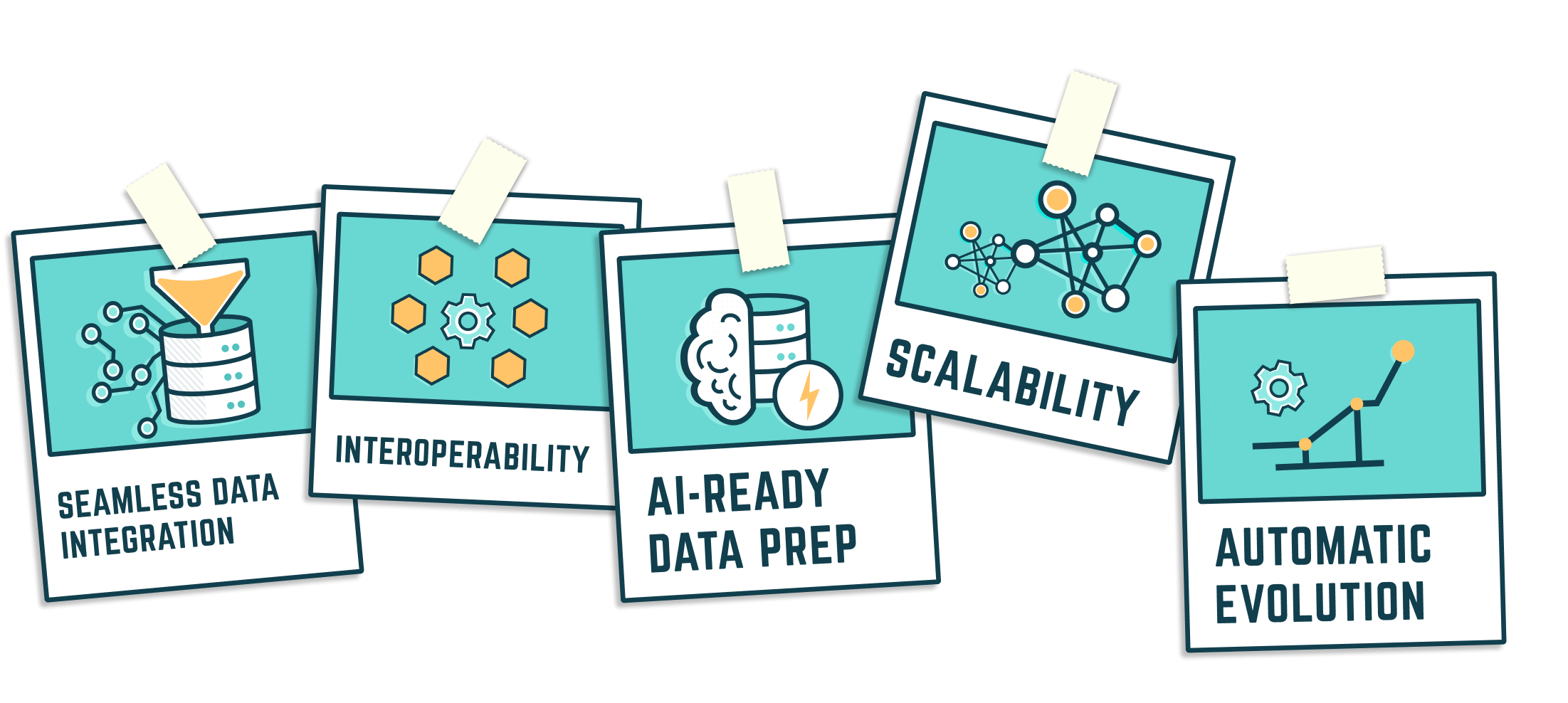
Seamless Data Ingestion:
LifeGraph’s REST APIs enable the integration of multiple data sources, creating adaptive data pipelines that include built-in data validation and cleansing steps.
AI-Ready Data Preparation:
The APIs support the creation of AI-capable data pipelines, ensuring that data is consistently validated and cleansed before being used in AI models or other applications.
Interoperability:
REST APIs facilitate communication between different systems, allowing LifeGraph to integrate with various enterprise applications and data sources seamlessly.
Automatic Evolution:
As new data sources are integrated, LifeGraph evolves automatically, updating relationships and maintaining data quality without requiring new data dictionaries or redeployment.
Scalability:
The API-driven approach allows businesses to continuously update their data ecosystems as new data sources are added, ensuring that the data remains relevant and interconnected for AI and analytics purposes.
Empower Collaboration
The Great Unifier has a bold vision for a shift to a data-driven culture. They know collaboration and shared data have become indispensable elements in the modern business landscape. Data and collaboration lead to enhanced decision-making, increased efficiency, fostered innovation, and improved competitiveness. However, realizing these benefits requires overcoming challenges related to privacy, security, data quality, and organizational culture.
By addressing data silos through technological solutions and cultural changes, organizations can unlock the full potential of cross-functional collaboration, leading to increased innovation, efficiency, and competitive advantage in the market. To maximize the benefits of collaboration and shared data while addressing the challenges, organizations should consider the following best practices:
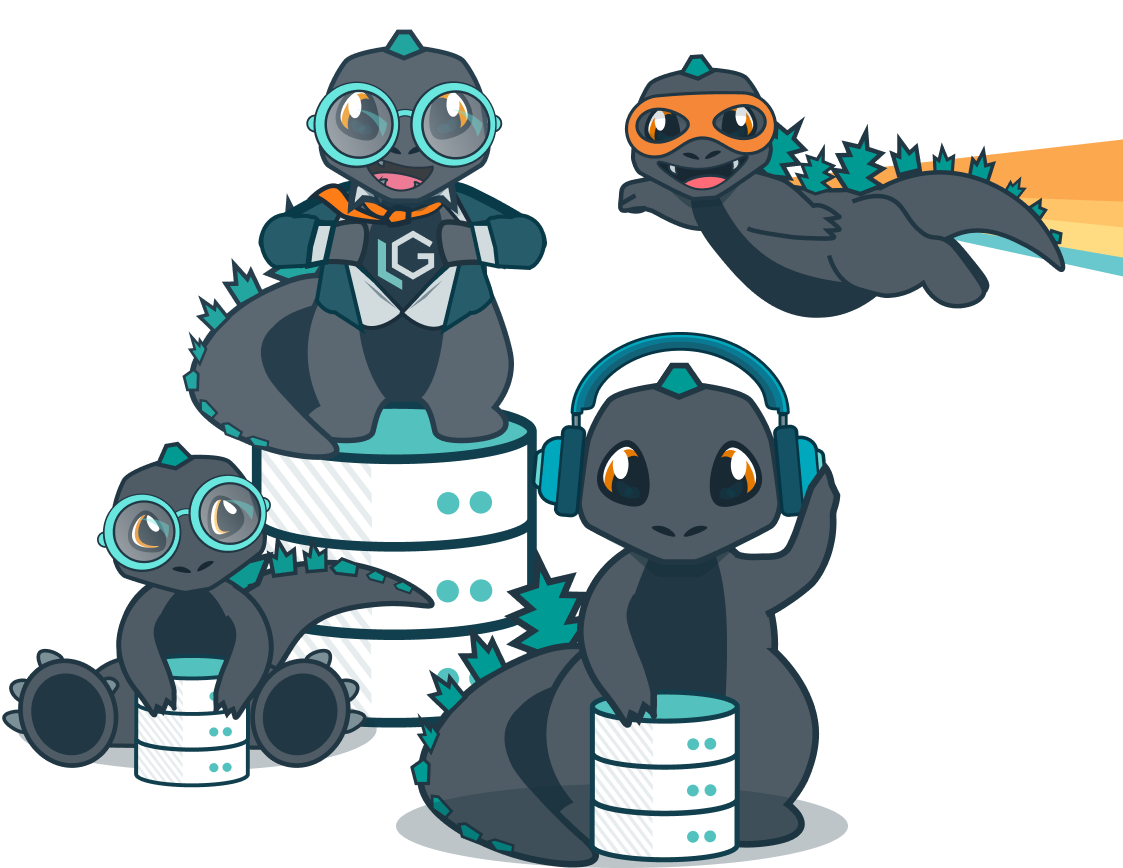

Implement Robust Data Governance:
Establish clear data governance frameworks to define data sharing and collaboration goals, align them with business objectives, and ensure compliance with industry regulations.

Prioritize Data Security & Privacy:
Implement secure data management strategies and use privacy-enhancing technologies to protect sensitive information while enabling collaboration.

Foster a Culture of Collaboration:
Promote a culture where data is seen as a shared asset rather than a departmental resource. Provide training and education to empower employees at all levels to contribute to data quality and collaboration efforts.

Implement Data Quality Measures:
Establish continuous data quality monitoring systems to ensure data remains reliable and usable for collaboration. This includes implementing AI-driven data quality checks and establishing feedback loops between data ingestion and consumption points.

Ensure Scalability & Adaptability:
Choose solutions that can evolve with organizational needs and seamlessly integrate new data sources as they become available.
how LifeGraph helps:
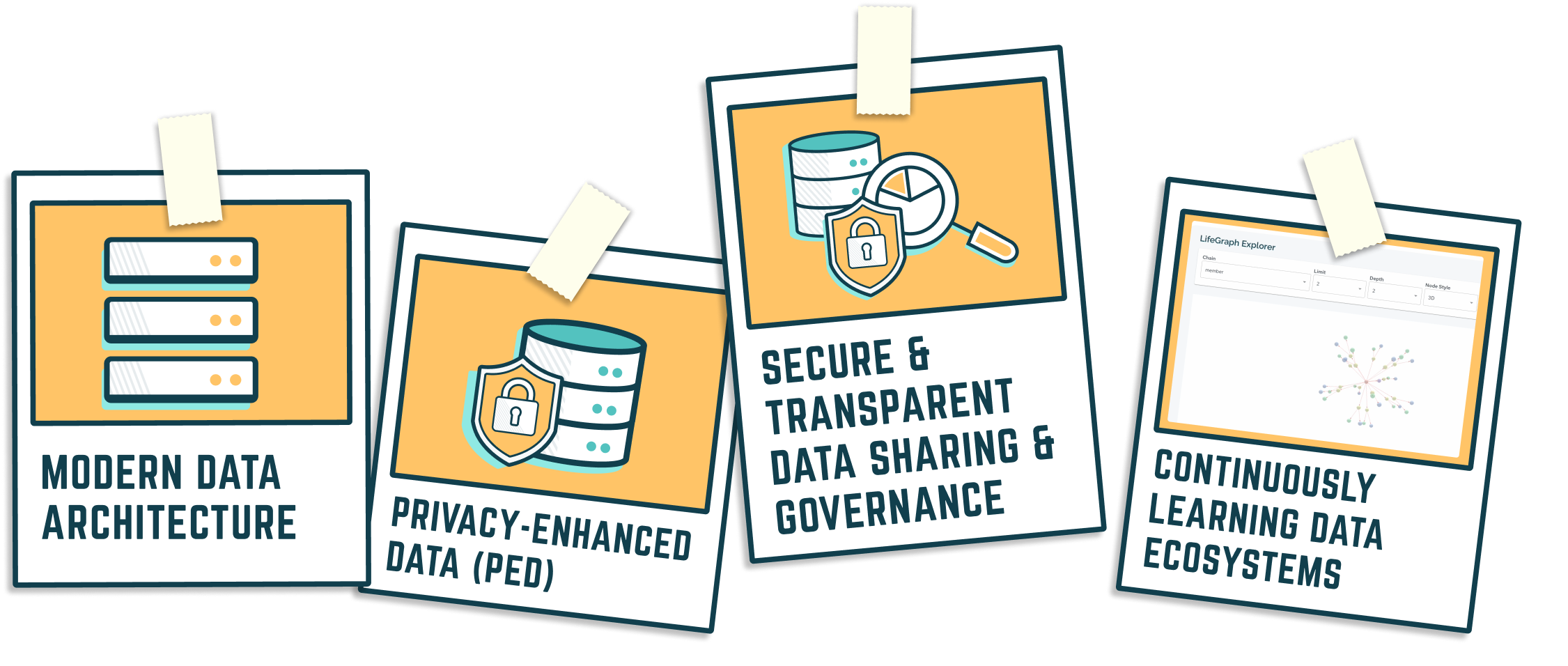
Modern Data Architecture:
LifeGraph enables a data mesh or data fabric architecture to enable more flexible and scalable data management across the organization.
Privacy-Enhanced Data:
LifeGraph connects data and transforms it into Smart Data. Smart Data is privacy-enhanced data enriched with trust (privacy, security, and ownership) and context (origin, lineage, changes over time, etc.), making data inherently more valuable for AI applications.
Secure + Transparent Data Sharing & Governance:
LifeGraph utilizes blockchain technology to manage the movement of data within your organization. Consent Contracts guarantee that data can only be shared with the owner’s permission. Smart Contracts are self-executing agreements, with their terms written directly into code and recorded on the blockchain. This level of automation ensures that data governance policies are enforced consistently without the need for intermediaries. For example, these contracts can automatically execute actions based on predefined conditions, ensuring compliance with regulations and organizational policies.
Continuously Learning Data Ecosystems:
With LifeGraph, data quality isn’t static. As new data from across your business ecosystem is integrated, the graph evolves, automatically updating relationships and ensuring ongoing data quality.
A Catalyst for Business Revolution in Operations & Innovation
The shift to a data-driven culture creates waves of change in organizations. Here are some examples of how LifeGraph has helped our customers change the way business is done.
Maryville University:
Maryville University’s transition from data silos to data flows represents a significant transformation in its approach to data management and utilization. They’ve connected 200+ systems helping them achieve a 360° view of all their students. Data moves fluidly across the organization, from sales and marketing to product development and customer support—constantly enriched, updated, and transformed along the way. Instead of viewing data as a static asset in a warehouse, Maryville now sees it as an active participant in value creation.
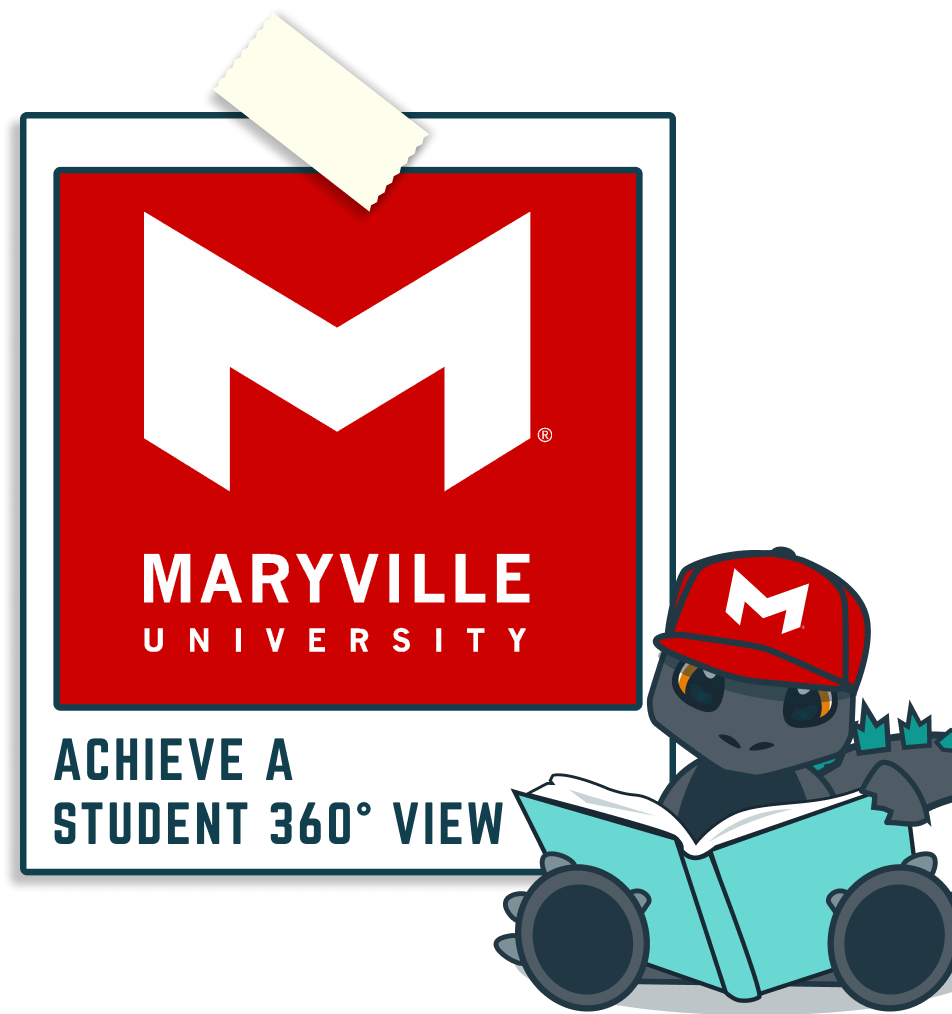
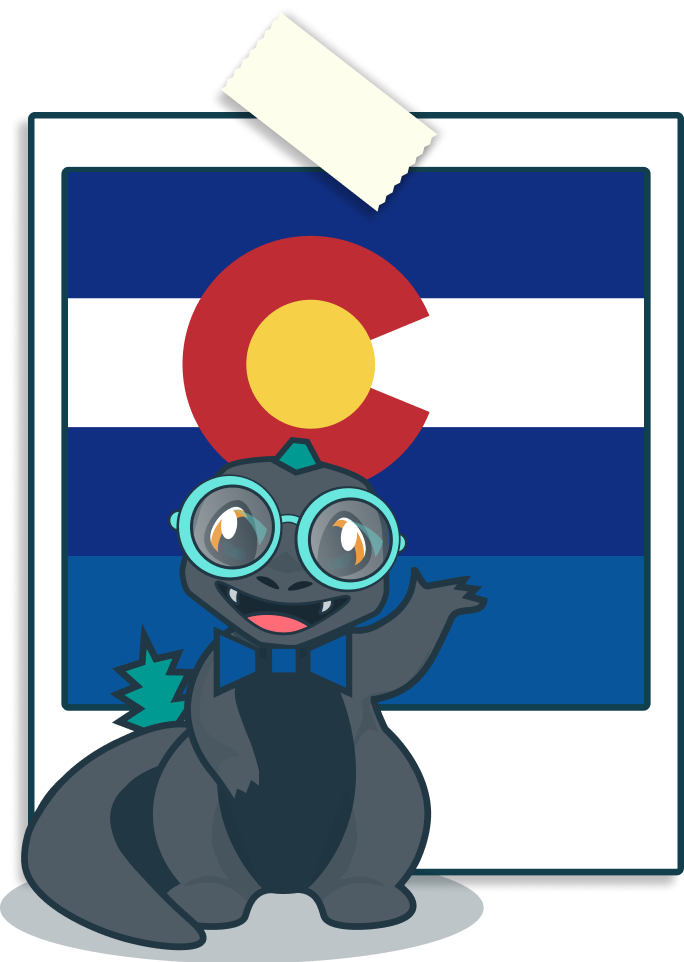
Colorado Medicaid:
The State of Colorado Medicaid connected 150+ systems to reduce the complexity of modularity for Colorado’s Medicaid Enterprise Solutions (CMES), replacing “spaghetti networks” with a simple API interface that coordinates and orchestrates all aspects of the CMES, including granular data access, auditing & reporting, data governance, and data integrity. It builds greater trust with Medicaid members and enables a depth of operational intelligence that is unmatched by other data management systems. It is the most advanced enterprise solution integration platform on the market today.a flows represents a significant transformation in its approach to data management and utilization. They’ve connected 200+ systems helping them achieve a 360° view of all their students. Data moves fluidly across the organization, from sales and marketing to product development and customer support—constantly enriched, updated, and transformed along the way. Instead of viewing data as a static asset in a warehouse, Maryville now sees it as an active participant in value creation.
Texas A&M Health:
LifeGraph transforms Texas A&M Health’s PROVENANCE clinicogenomics registry programs by empowering all data stakeholders, including researchers, institutional stewards, and patients. By utilizing privacy-preserving techniques, dynamic consent, and federated learning approaches, LifeGraph enables Texas A&M Health to address the risks and challenges associated with relying solely on deidentification methods for genomic data governance. This innovative solution guarantees a secure and efficient data management system for everyone involved.
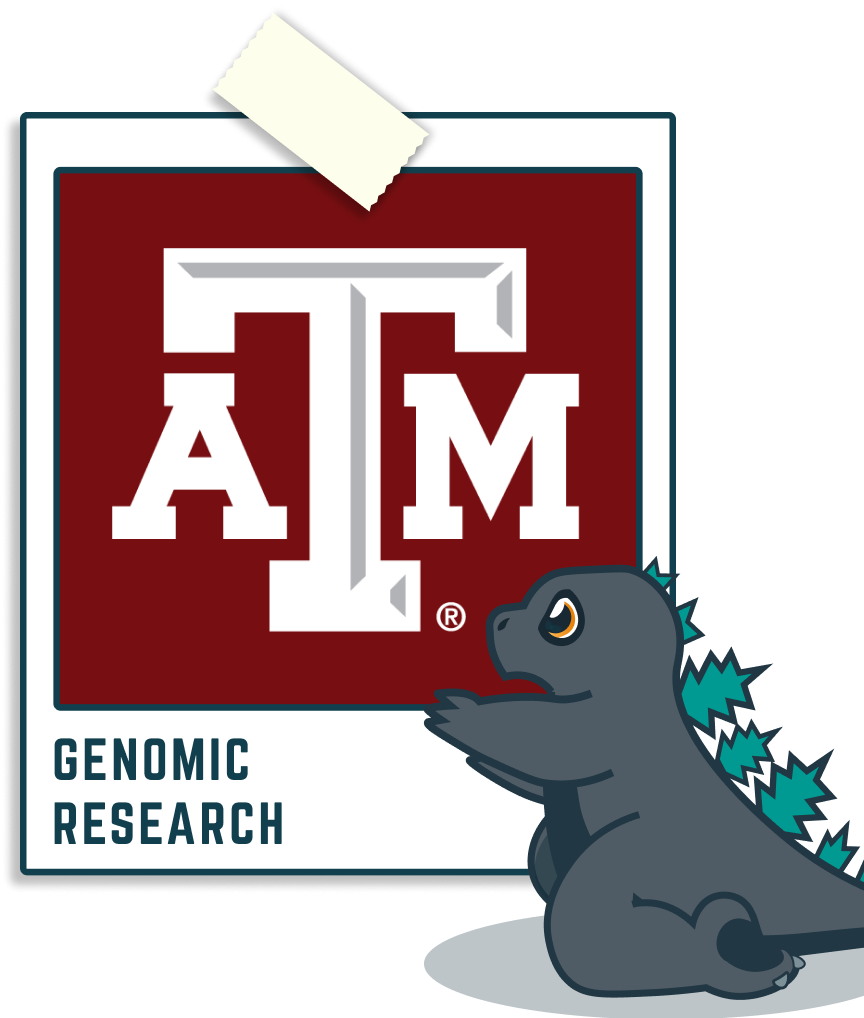
Unifying Data, Empowering Innovation
In the era of data-driven decision-making, The Great Unifier emerges as a crucial role for organizational success. By breaking down data silos, fostering collaboration, and leveraging unified data management solutions like LifeGraph, organizations can unlock the full potential of their data assets.
Are you ready to become The Great Unifier in your organization?
Let’s connect and explore how LifeGraph can help you bridge data silos and drive innovation across your enterprise.
Knowledge Burst Series:
Conquering Data Chaos
to Win in an AI World
In a world increasingly driven by data, the landscape can often feel chaotic and overwhelming. The urgency to implement AI both successfully and ethically has never been greater. Join us in this Knowledge Graph Series as we embark on an exhilarating adventure with our hero, Blast. Equipped with his powerful tool, LifeGraph®—the next generation of data management—Blast tackles the chaotic landscape of data. Prepare to explore the intricacies of data-driven innovation and discover how to harness its true potential!
At BurstIQ, we make data your superpower.
We’ve found our customers identify with the following data personas:
Quality Commander:
The relentless champion of data integrity, tirelessly working to ensure that information is not just abundant but also accurate and actionable.
THE GREAT UNIFIER:
The collaborative force that bridges gaps between silos, systems, departments, and disciplines, fostering a culture of data-sharing and teamwork.
GUARDIAN OF PRIVACY:
The vigilant protector of personal information, committed to safeguarding privacy while navigating the complexities of data collection and usage.
DATA DEMOCRATIZER:
The passionate advocate for accessibility, striving to empower everyone in their business ecosystem with the knowledge and tools to leverage data for their benefit.
AI Activator:
The visionary architect of intelligent systems, harnessing the power of artificial intelligence, machine learning, and generative AI as a force multiplier to enhance team productivity, personalize engagements, and accelerate the pace of innovation.
AI ALCHEMIST:
A master of transforming raw data into golden opportunities, using AI to create innovative solutions for market differentiation and business growth.
COMPLIANCE CRUSADER:
The unwavering enforcer of regulations and ethical standards, ensuring that data practices align with laws and best practices to protect both organizations and consumers.
Throughout this Knowledge Graph Series, we will dive deep into each persona, celebrating their unique missions and the challenges they face in the ever-evolving data landscape. You’ll learn how LifeGraph helps you tackle some of the biggest obstacles in data management.
Chapter 2:
Great Unifier
blast’s great unifier saga

In today’s data-driven world, organizations face a critical challenge: the proliferation of data silos. These isolated pockets of information hinder collaboration, impede decision-making, and stifle innovation. Enter our hero, Blast, in his latest role as The Great Unifier! Armed with BurstIQ’s LifeGraph® platform, Blast is on a mission to break down barriers, foster collaboration, and unleash the full potential of unified data across the enterprise.
At BurstIQ, we believe that data unification is more than a technical challenge—it’s a transformative force that can revolutionize how organizations operate and innovate. In this Knowledge Burst Series, we’ll explore the key principles, challenges, and solutions for becoming The Great Unifier in your organization, and how LifeGraph can help you achieve this vital role.
A Land of Data Silos
Data silos represent a significant obstacle to organizational efficiency and innovation. These isolated repositories of information create numerous challenges:

Inefficiencies & Reduced Productivity:
Knowledge workers spend an average of 12 hours a week “chasing data” due to silos, leading to wasted time and duplicated efforts. U.S. businesses lose an estimated $1.8 trillion annually due to lost productivity caused by data silos.

Inconsistent & Incomplete Data:
Fragmented systems result in conflicting information and incomplete datasets, hindering accurate decision-making.

Communication & Collaboration Barriers:
Isolated data creates a “stay out of my way” mentality among departments, impeding teamwork and innovation.

Increased Costs & Resource Utilization:
Maintaining multiple data silos is costly and leads to inefficient use of storage and human resources.

Security & Compliance Risks:
Scattered data across various systems makes it challenging to implement consistent security measures and ensure regulatory compliance.

Organizational Growth:
As companies expand, departments may develop their own systems and processes, leading to isolated data repositories.

Technological Barriers:
Incompatible software or data management systems between departments create technical silos.

Cultural Factors:
A company culture that doesn’t prioritize data sharing can lead to protective attitudes towards departmental data.

Lack of Centralized Data Management:
Without a unified strategy, departments may independently manage their data.

Departmental Silos:
Organizational structures emphasizing departmental independence naturally lead to data silos.

Diverse Business Unit Systems:
When different units use varied systems for data management, it results in non-communicating data repositories.

Smart Data Transformation:
LifeGraph enriches raw data with trust and context, making it more valuable and actionable across the organization.
Organizations don’t purposefully create data silos; it often happens organically over time.
how LifeGraph helps:

Seamless Data Ingestion:
LifeGraph’s REST APIs enable the integration of multiple data sources, creating adaptive data pipelines that include built-in data validation and cleansing steps.
AI-Ready Data Preparation:
The APIs support the creation of AI-capable data pipelines, ensuring that data is consistently validated and cleansed before being used in AI models or other applications.
Interoperability:
REST APIs facilitate communication between different systems, allowing LifeGraph to integrate with various enterprise applications and data sources seamlessly.
Automatic Evolution:
As new data sources are integrated, LifeGraph evolves automatically, updating relationships and maintaining data quality without requiring new data dictionaries or redeployment.
Scalability:
The API-driven approach allows businesses to continuously update their data ecosystems as new data sources are added, ensuring that the data remains relevant and interconnected for AI and analytics purposes.
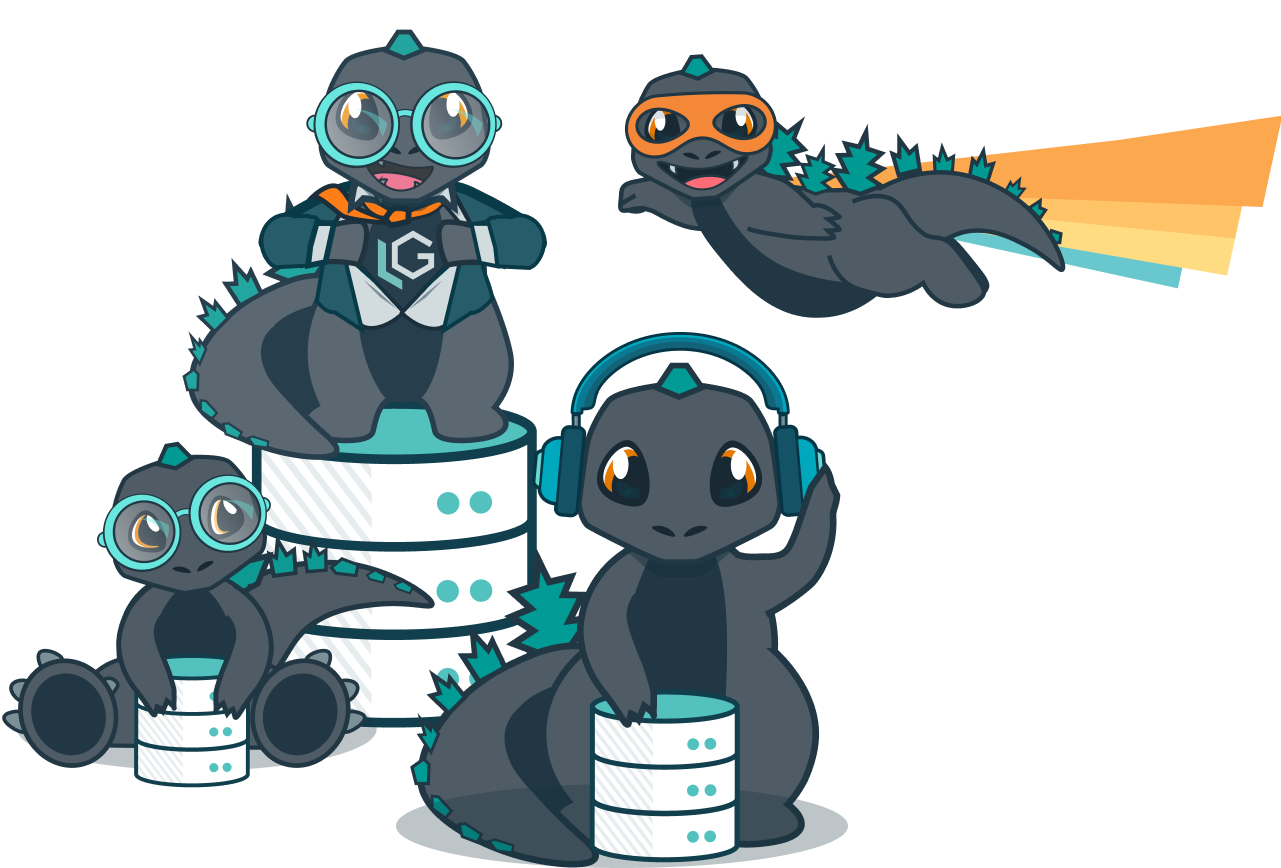
Empower Collaboration
The Great Unifier has a bold vision for a shift to a data-driven culture. They know collaboration and shared data have become indispensable elements in the modern business landscape. Data and collaboration lead to enhanced decision-making, increased efficiency, fostered innovation, and improved competitiveness. However, realizing these benefits requires overcoming challenges related to privacy, security, data quality, and organizational culture.
By addressing data silos through technological solutions and cultural changes, organizations can unlock the full potential of cross-functional collaboration, leading to increased innovation, efficiency, and competitive advantage in the market. To maximize the benefits of collaboration and shared data while addressing the challenges, organizations should consider the following best practices:

Implement Robust Data Governance:
Establish clear data governance frameworks to define data sharing and collaboration goals, align them with business objectives, and ensure compliance with industry regulations.

Prioritize Data Security & Privacy:
Implement secure data management strategies and use privacy-enhancing technologies to protect sensitive information while enabling collaboration.

Foster a Culture of Collaboration:
Promote a culture where data is seen as a shared asset rather than a departmental resource. Provide training and education to empower employees at all levels to contribute to data quality and collaboration efforts.

Implement Data Quality Measures:
Establish continuous data quality monitoring systems to ensure data remains reliable and usable for collaboration. This includes implementing AI-driven data quality checks and establishing feedback loops between data ingestion and consumption points.

Ensure Scalability & Adaptability:
Choose solutions that can evolve with organizational needs and seamlessly integrate new data sources as they become available.
how LifeGraph helps:

Modern Data Architecture:
LifeGraph enables a data mesh or data fabric architecture to enable more flexible and scalable data management across the organization.
Privacy-Enhanced Data:
LifeGraph connects data and transforms it into Smart Data. Smart Data is privacy-enhanced data enriched with trust (privacy, security, and ownership) and context (origin, lineage, changes over time, etc.), making data inherently more valuable for AI applications.
Secure + Transparent Data Sharing & Governance:
LifeGraph utilizes blockchain technology to manage the movement of data within your organization. Consent Contracts guarantee that data can only be shared with the owner’s permission. Smart Contracts are self-executing agreements, with their terms written directly into code and recorded on the blockchain. This level of automation ensures that data governance policies are enforced consistently without the need for intermediaries. For example, these contracts can automatically execute actions based on predefined conditions, ensuring compliance with regulations and organizational policies.
Continuously Learning Data Ecosystems:
With LifeGraph, data quality isn’t static. As new data from across your business ecosystem is integrated, the graph evolves, automatically updating relationships and ensuring ongoing data quality.
A Catalyst for Business Revolution in Operations & Innovation
The shift to a data-driven culture creates waves of change in organizations. Here are some examples of how LifeGraph has helped our customers change the way business is done.
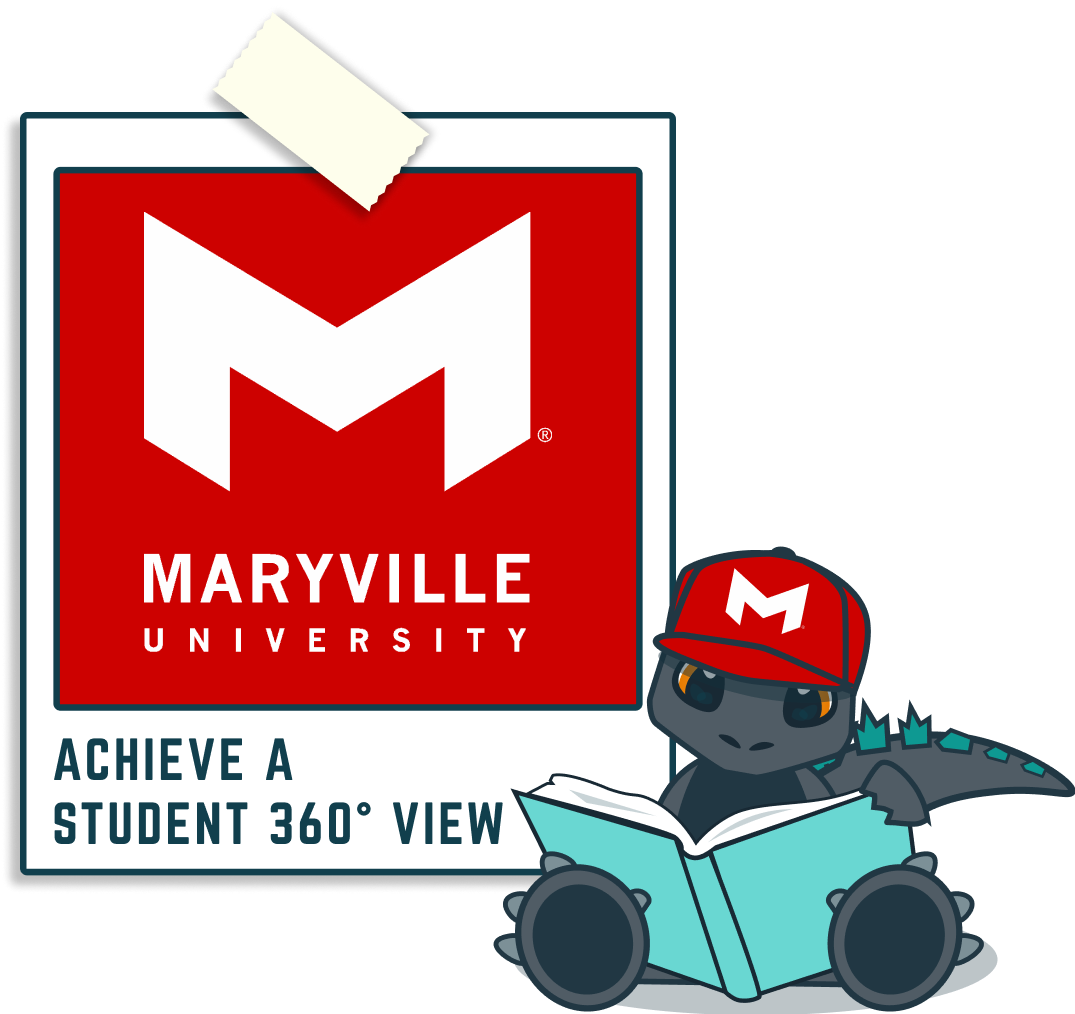
Maryville University:
Maryville University’s transition from data silos to data flows represents a significant transformation in its approach to data management and utilization. They’ve connected 200+ systems helping them achieve a 360° view of all their students. Data moves fluidly across the organization, from sales and marketing to product development and customer support—constantly enriched, updated, and transformed along the way. Instead of viewing data as a static asset in a warehouse, Maryville now sees it as an active participant in value creation.

Colorado Medicaid:
The State of Colorado Medicaid connected 150+ systems to reduce the complexity of modularity for Colorado’s Medicaid Enterprise Solutions (CMES), replacing “spaghetti networks” with a simple API interface that coordinates and orchestrates all aspects of the CMES, including granular data access, auditing & reporting, data governance, and data integrity. It builds greater trust with Medicaid members and enables a depth of operational intelligence that is unmatched by other data management systems. It is the most advanced enterprise solution integration platform on the market today.a flows represents a significant transformation in its approach to data management and utilization. They’ve connected 200+ systems helping them achieve a 360° view of all their students. Data moves fluidly across the organization, from sales and marketing to product development and customer support—constantly enriched, updated, and transformed along the way. Instead of viewing data as a static asset in a warehouse, Maryville now sees it as an active participant in value creation.
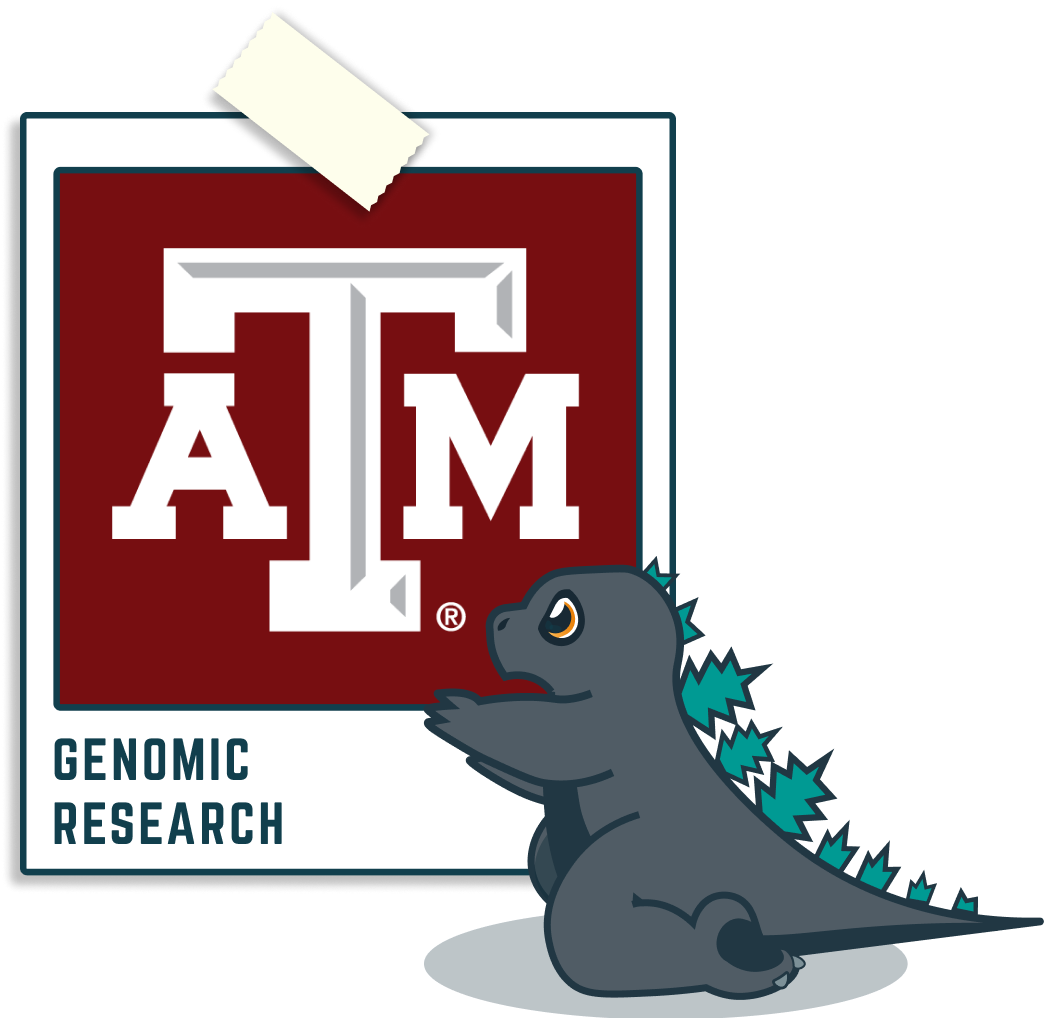
Texas A&M Health:
LifeGraph transforms Texas A&M Health’s PROVENANCE clinicogenomics registry programs by empowering all data stakeholders, including researchers, institutional stewards, and patients. By utilizing privacy-preserving techniques, dynamic consent, and federated learning approaches, LifeGraph enables Texas A&M Health to address the risks and challenges associated with relying solely on deidentification methods for genomic data governance. This innovative solution guarantees a secure and efficient data management system for everyone involved.
Unifying Data, Empowering Innovation
In the era of data-driven decision-making, The Great Unifier emerges as a crucial role for organizational success. By breaking down data silos, fostering collaboration, and leveraging unified data management solutions like LifeGraph, organizations can unlock the full potential of their data assets.
Are you ready to become The Great Unifier in your organization?
Let’s connect and explore how LifeGraph can help you bridge data silos and drive innovation across your enterprise.
Knowledge Burst Series:
Conquering Data Chaos to Win in an AI World
In a world increasingly driven by data, the landscape can often feel chaotic and overwhelming. The urgency to implement AI both successfully and ethically has never been greater. Join us in this Knowledge Graph Series as we embark on an exhilarating adventure with our hero, Blast. Equipped with his powerful tool, LifeGraph®—the next generation of data management—Blast tackles the chaotic landscape of data. Prepare to explore the intricacies of data-driven innovation and discover how to harness its true potential!
At BurstIQ, we make data your superpower.
We’ve found our customers identify with the following data personas:
Quality Commander:
The relentless champion of data integrity, tirelessly working to ensure that information is not just abundant but also accurate and actionable.
THE GREAT UNIFIER:
The collaborative force that bridges gaps between silos, systems, departments, and disciplines, fostering a culture of data-sharing and teamwork.
GUARDIAN OF PRIVACY:
The vigilant protector of personal information, committed to safeguarding privacy while navigating the complexities of data collection and usage.
DATA DEMOCRATIZER:
The passionate advocate for accessibility, striving to empower everyone in their business ecosystem with the knowledge and tools to leverage data for their benefit.
AI Activator:
The visionary architect of intelligent systems, harnessing the power of artificial intelligence, machine learning, and generative AI as a force multiplier to enhance team productivity, personalize engagements, and accelerate the pace of innovation.
AI ALCHEMIST:
A master of transforming raw data into golden opportunities, using AI to create innovative solutions for market differentiation and business growth.
COMPLIANCE CRUSADER:
The unwavering enforcer of regulations and ethical standards, ensuring that data practices align with laws and best practices to protect both organizations and consumers.
Throughout this Knowledge Graph Series, we will dive deep into each persona, celebrating their unique missions and the challenges they face in the ever-evolving data landscape. You’ll learn how LifeGraph helps you tackle some of the biggest obstacles in data management.
Chapter 2:
Great Unifier
blast’s great unifier saga

In today’s data-driven world, organizations face a critical challenge: the proliferation of data silos. These isolated pockets of information hinder collaboration, impede decision-making, and stifle innovation. Enter our hero, Blast, in his latest role as The Great Unifier! Armed with BurstIQ’s LifeGraph® platform, Blast is on a mission to break down barriers, foster collaboration, and unleash the full potential of unified data across the enterprise.
At BurstIQ, we believe that data unification is more than a technical challenge—it’s a transformative force that can revolutionize how organizations operate and innovate. In this Knowledge Burst Series, we’ll explore the key principles, challenges, and solutions for becoming The Great Unifier in your organization, and how LifeGraph can help you achieve this vital role.
A Land of Data Silos
Data silos represent a significant obstacle to organizational efficiency and innovation. These isolated repositories of information create numerous challenges:
Inefficiencies & Reduced Productivity:
Knowledge workers spend an average of 12 hours a week “chasing data” due to silos, leading to wasted time and duplicated efforts. U.S. businesses lose an estimated $1.8 trillion annually due to lost productivity caused by data silos.
Inconsistent & Incomplete Data:
Fragmented systems result in conflicting information and incomplete datasets, hindering accurate decision-making.
Communication & Collaboration Barriers:
Isolated data creates a “stay out of my way” mentality among departments, impeding teamwork and innovation.
Increased Costs & Resource Utilization:
Maintaining multiple data silos is costly and leads to inefficient use of storage and human resources.
Security & Compliance Risks:
Scattered data across various systems makes it challenging to implement consistent security measures and ensure regulatory compliance.
Organizational Growth:
As companies expand, departments may develop their own systems and processes, leading to isolated data repositories.
Technological Barriers:
Incompatible software or data management systems between departments create technical silos.
Cultural Factors:
A company culture that doesn’t prioritize data sharing can lead to protective attitudes towards departmental data.
Lack of Centralized Data Management:
Without a unified strategy, departments may independently manage their data.
Departmental Silos:
Organizational structures emphasizing departmental independence naturally lead to data silos.
Diverse Business Unit Systems:
When different units use varied systems for data management, it results in non-communicating data repositories.
Smart Data Transformation:
LifeGraph enriches raw data with trust and context, making it more valuable and actionable across the organization.
Organizations don’t purposefully create data silos; it often happens organically over time.
how LifeGraph helps:
Seamless Data Ingestion:
LifeGraph’s REST APIs enable the integration of multiple data sources, creating adaptive data pipelines that include built-in data validation and cleansing steps.
AI-Ready Data Preparation:
The APIs support the creation of AI-capable data pipelines, ensuring that data is consistently validated and cleansed before being used in AI models or other applications.
Interoperability:
REST APIs facilitate communication between different systems, allowing LifeGraph to integrate with various enterprise applications and data sources seamlessly.
Automatic Evolution:
As new data sources are integrated, LifeGraph evolves automatically, updating relationships and maintaining data quality without requiring new data dictionaries or redeployment.
Scalability:
The API-driven approach allows businesses to continuously update their data ecosystems as new data sources are added, ensuring that the data remains relevant and interconnected for AI and analytics purposes.

Empower Collaboration
The Great Unifier has a bold vision for a shift to a data-driven culture. They know collaboration and shared data have become indispensable elements in the modern business landscape. Data and collaboration lead to enhanced decision-making, increased efficiency, fostered innovation, and improved competitiveness. However, realizing these benefits requires overcoming challenges related to privacy, security, data quality, and organizational culture.
By addressing data silos through technological solutions and cultural changes, organizations can unlock the full potential of cross-functional collaboration, leading to increased innovation, efficiency, and competitive advantage in the market. To maximize the benefits of collaboration and shared data while addressing the challenges, organizations should consider the following best practices:
Implement Robust Data Governance:
Establish clear data governance frameworks to define data sharing and collaboration goals, align them with business objectives, and ensure compliance with industry regulations.
Prioritize Data Security & Privacy:
Implement secure data management strategies and use privacy-enhancing technologies to protect sensitive information while enabling collaboration.
Foster a Culture of Collaboration:
Promote a culture where data is seen as a shared asset rather than a departmental resource. Provide training and education to empower employees at all levels to contribute to data quality and collaboration efforts.
Implement Data Quality Measures:
Establish continuous data quality monitoring systems to ensure data remains reliable and usable for collaboration. This includes implementing AI-driven data quality checks and establishing feedback loops between data ingestion and consumption points.
Ensure Scalability & Adaptability:
Choose solutions that can evolve with organizational needs and seamlessly integrate new data sources as they become available.
how LifeGraph helps:
Modern Data Architecture:
LifeGraph enables a data mesh or data fabric architecture to enable more flexible and scalable data management across the organization.
Privacy-Enhanced Data:
LifeGraph connects data and transforms it into Smart Data. Smart Data is privacy-enhanced data enriched with trust (privacy, security, and ownership) and context (origin, lineage, changes over time, etc.), making data inherently more valuable for AI applications.
Secure + Transparent Data Sharing & Governance:
LifeGraph utilizes blockchain technology to manage the movement of data within your organization. Consent Contracts guarantee that data can only be shared with the owner’s permission. Smart Contracts are self-executing agreements, with their terms written directly into code and recorded on the blockchain. This level of automation ensures that data governance policies are enforced consistently without the need for intermediaries. For example, these contracts can automatically execute actions based on predefined conditions, ensuring compliance with regulations and organizational policies.
Continuously Learning Data Ecosystems:
With LifeGraph, data quality isn’t static. As new data from across your business ecosystem is integrated, the graph evolves, automatically updating relationships and ensuring ongoing data quality.
A Catalyst for Business Revolution in Operations & Innovation
The shift to a data-driven culture creates waves of change in organizations. Here are some examples of how LifeGraph has helped our customers change the way business is done.

Maryville University:
Maryville University’s transition from data silos to data flows represents a significant transformation in its approach to data management and utilization. They’ve connected 200+ systems helping them achieve a 360° view of all their students. Data moves fluidly across the organization, from sales and marketing to product development and customer support—constantly enriched, updated, and transformed along the way. Instead of viewing data as a static asset in a warehouse, Maryville now sees it as an active participant in value creation.

Colorado Medicaid:
The State of Colorado Medicaid connected 150+ systems to reduce the complexity of modularity for Colorado’s Medicaid Enterprise Solutions (CMES), replacing “spaghetti networks” with a simple API interface that coordinates and orchestrates all aspects of the CMES, including granular data access, auditing & reporting, data governance, and data integrity. It builds greater trust with Medicaid members and enables a depth of operational intelligence that is unmatched by other data management systems. It is the most advanced enterprise solution integration platform on the market today.a flows represents a significant transformation in its approach to data management and utilization. They’ve connected 200+ systems helping them achieve a 360° view of all their students. Data moves fluidly across the organization, from sales and marketing to product development and customer support—constantly enriched, updated, and transformed along the way. Instead of viewing data as a static asset in a warehouse, Maryville now sees it as an active participant in value creation.

Texas A&M Health:
LifeGraph transforms Texas A&M Health’s PROVENANCE clinicogenomics registry programs by empowering all data stakeholders, including researchers, institutional stewards, and patients. By utilizing privacy-preserving techniques, dynamic consent, and federated learning approaches, LifeGraph enables Texas A&M Health to address the risks and challenges associated with relying solely on deidentification methods for genomic data governance. This innovative solution guarantees a secure and efficient data management system for everyone involved.
Unifying Data, Empowering Innovation
In the era of data-driven decision-making, The Great Unifier emerges as a crucial role for organizational success. By breaking down data silos, fostering collaboration, and leveraging unified data management solutions like LifeGraph, organizations can unlock the full potential of their data assets.
Are you ready to become The Great Unifier in your organization?
Let’s connect and explore how LifeGraph can help you bridge data silos and drive innovation across your enterprise.

